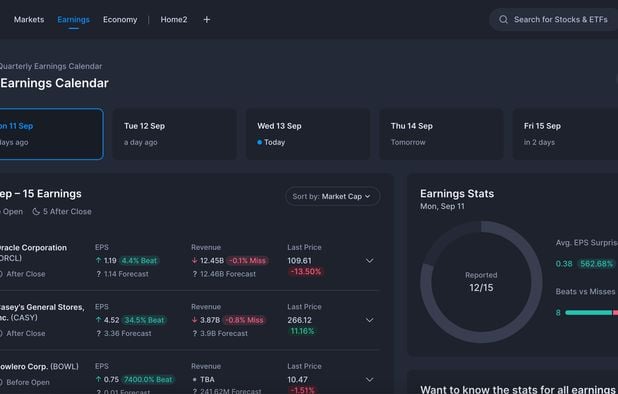Top 10 Tips To Assess The Integration And Compatibility Of Ai-Based Stock Predicting/Analyzing Trading Platforms
Integration and compatibility are key factors when evaluating AI platform for stock prediction and analysis. An integrated platform that is seamless with your current tools such as systems, workflows, and processes will significantly increase efficiency and effectiveness. Here are the top ten tips to assess compatibility and integration.
1. Check Brokerage Integration
Supported Brokers: Ensure that the platform you choose to use is compatible with your preferred broker account or trading platform.
Trade execution: Check whether your platform allows you to make trades directly with an integrated broker.
Account synchronization: Check that the platform is able to update in real-time account balances and positions and transaction history.
2. Check API Availability
API access: Ensure that the platform you choose to use has an API (Application Programming Interface), which allows developers to create customized applications and streamline workflows.
API documentation: Check if the API is well-documented, with clear examples and use cases.
Rate limits. Verify that the API you are considering has reasonable rate limitations and is able to handle your usage volume.
3. Assessment of Third-Party Tools Integration
Popular Tools: Make sure that the platform has integrations with other software, like Google Sheets and Excel.
Data import and export: Make sure the platform permits easy export and import of data into and out of other tools.
Extensions and plugins Check the platform's support for extensions as well as plugins that provide additional functions.
4. Test Compatibility using Operating Systems
Desktop compatibility is essential. Be sure that your device works with the operating system you like (Windows MacOS Linux).
Mobile compatibility - Search to see if a platform has a mobile app available for iOS as well as Android.
Web-based access: Verify that the platform can be accessible via a web browser for added flexibility.
5. Assess Data Integration Capabilities
Data sources: Make sure the platform is able to connect diverse data sources, such as market data providers RSS feeds, social media sentiment.
Real-time feeds of data Verify that the platform allows for real-time data integration to provide up-to date analysis.
Historical data import - Make sure that the platform allows you to add historical data to your backtesting or analysis software.
6. Evaluation of cloud and on-premise compatibility
Cloud-based platform: Accessible any time, anywhere, as long as you have an internet connection.
Solutions on-premise. If you are interested in deploying on-premise, check if your platform supports it.
Take a look at the hybrid model. It blends on-premise with cloud capabilities.
7. Look for Cross Platform Syncronization
Device synchronization. Check that the platform synchronizes data and settings between the devices (desktops/laptops/mobiles/tablets).
Verify that changes made on the device immediately reflect on another.
Access offline: Determine whether the platform supports only limited access to data or functions even when offline.
8. Examine compatibility of trading strategies
Algorithmic Trading: Make sure the platform is compatible with algorithmic or automated trading strategies.
Custom indicators. Check whether the platform permits the use of technical indicators or scripts.
Strategy backtesting - Check to see if your trading platform supports backtesting with historical data.
9. Examine Security and Compliance
Data encryption: Make sure whether the platform is using encryption to secure data in transit and while at rest.
Validation: Determine that the platform is authenticated methods that are secure (e.g. two-factor authentication).
Regulatory compliance : Verify if the platform is compliant with applicable regulations.
10. Test Scalability and Performance
Scalability: Ensure the platform is able to handle an increase in data as well as users and users, so that it can expand with your company.
Performance under load - Check that the platform is able to continue responding to market conditions with high volatility.
Resource usage: Verify that the system is using resources efficiently (CPUs, memory, bandwidth).
Bonus Tips:
Users' feedback: Look for reviews and comments from users when evaluating the platform.
Free Trial: Test the platform's integration with existing tools and workflows using a trial or demo.
Support for customers: Make sure the platform has robust support for integration issues.
Following these tips can help you evaluate the ability to integrate seamlessly and with ease AI trading platforms that forecast or analyze the prices of stocks. They can also improve your trading performance. Follow the best this hyperlink on ai investing app for site examples including AI stock trading app, AI stock trading bot free, best ai trading app, ai investment platform, ai trade, ai investing app, best ai trading software, AI stock trading app, chatgpt copyright, ai chart analysis and more.

Top 10 Tips On How To Assess The Reputation Of Ai Stock Predicting/Analyzing Trading Platforms
Examining reviews and reputation of AI-driven stock prediction systems and trading platforms is crucial to ensure trustworthiness, reliability and efficiency. Here are ten top suggestions to evaluate their reputation and reviews.
1. Check Independent Review Platforms
Review reviews on reputable platforms such as G2, copyright, and Capterra.
Why: Independent platforms offer honest feedback from real users.
2. Examine User Testimonials and Case Studies
Tip: Read user testimonials and case studies on the platform's site or other third-party sites.
What are the benefits? They provide insight into performance in the real world and the level of satisfaction among users.
3. Examine Expert Opinions of Industry Recognition
Tips. Check whether the platform is highly recommended or endorsed by experts in the industry or financial analysts, reliable magazines or other publications.
Expert endorsements give credibility to the claims of the platform.
4. Social Media Sentiment
TIP Be on the lookout for social media platforms such as Twitter, LinkedIn and Reddit to find out what people are saying about them.
Social media allow you to get the honest opinions of users and trends.
5. Verify Compliance with Regulatory Regulations
Tip: Make sure the platform is in compliance not only with privacy laws, but also with financial regulations.
The reason: Compliance assists in ensuring that the platform runs legally and ethically.
6. Transparency of Performance Metrics
Tip: Look for transparent performance metrics on the platform (e.g. accuracy rates and ROI).
Transparency can build trust, and also allows users to evaluate the effectiveness of a platform.
7. Verify the quality of customer support.
Reviewers can see how responsive and effective the customer service is.
Why is it important to have reliable support? It's crucial for resolving any issues and ensuring a pleasant customer experience.
8. Red Flags to Look for in reviews
Tip: Pay attention to frequent complaints, such as unprofessional service, hidden costs or the absence of new features.
The reason for this is that a consistent negative feedback indicates potential problems on the platform.
9. Evaluation of User and Community Engagement
Tip: Check to see whether there's a vibrant community of users on the platform (e.g. Discord groups, forums) and if they engage with their users frequently.
Why is that a solid community indicates satisfaction of users and continued support.
10. Study the track record of the company.
Find out more about the company's history by studying its background the management team, its history, and financial technology performance.
What's the reason? A track record of reliability and expertise increases the confidence in the platform.
Compare Multiple Platforms
Compare the reviews and reputation of various platforms to determine which one is the best fit for your requirements.
These guidelines will allow you thoroughly analyze the credibility and reviews of AI software for stock prediction as well as trading platforms. This will allow you to pick a reliable and efficient solution. Check out the most popular this post about AI stock analysis for blog recommendations including ai software stocks, stocks ai, ai software stocks, best AI stocks to buy now, stocks ai, AI stock prediction, ai tools for trading, chart ai trading, invest ai, stock trading ai and more.

Comments on “20 Top Ideas For Choosing AI Stock Trading Platforms”